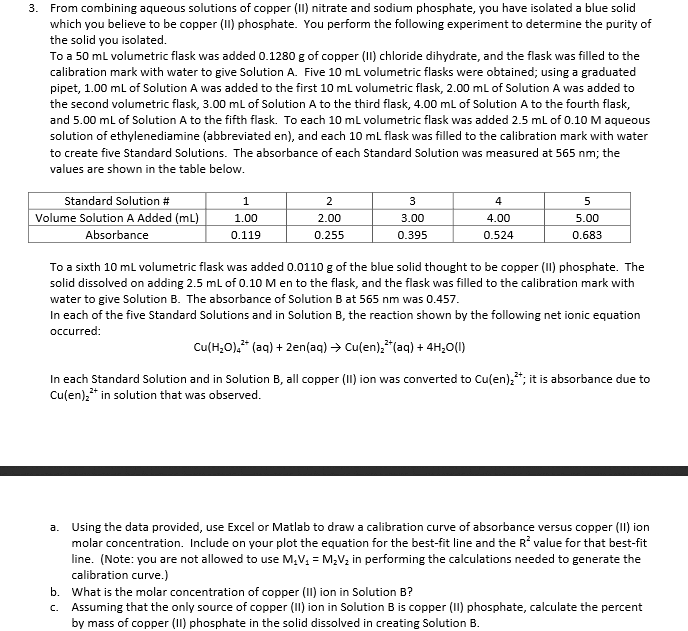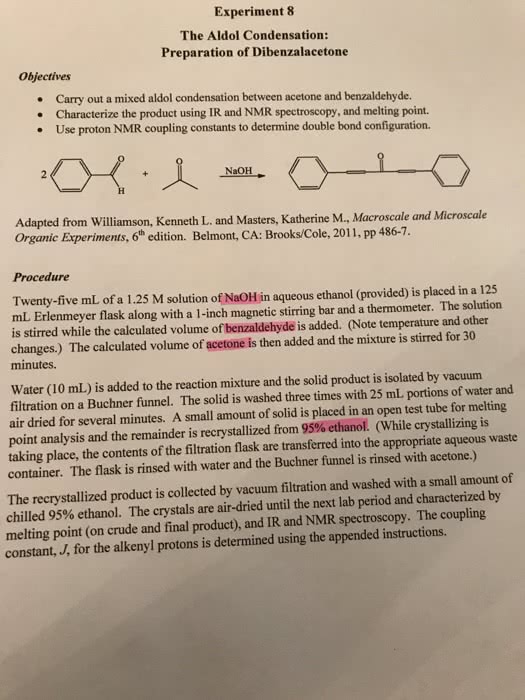To a 125 mL Erlenmeyer flask were added 1.220 g of solid copper (II) nitrate trihydrate, 10.0 mL of water, and a magnetic stirring bar. To the stirred solution was added, in small portions, a total of 2.000 g of sodium carbonate decahydrate. The blue solid that formed was isolated by vacuum filtration, partially dried, and placed in a second 125 mL Erlenmeyer flask. To the flask was added 2.0 mL of 12 M hydrochloric acid. To the resultant yellow solution was added 0.500 g of solid copper; the mixture was heated until the solution became colorless. After cooling the solution to room temperature, addition of 10.0 mL of water caused white, solid copper (I) chloride to separate from the solution. Isolated by vacuum filtration was 0.705 g of solid copper (I) chloride. Calculate the percent yield of copper (I) chloride. The equations for the reactions performed are shown below
Cu2+(aq) + CO32-(aq) â CuCO3(s)
CuCO3(aq) + 2H+(aq) + 4Cl-(aq) â CuCl42-(aq) + H2O(l) + CO2(g)
CuCl42-(aq) +Cu(s) â 2CuCl(s) + 2Cl-(aq)
To a 125 mL Erlenmeyer flask were added 1.220 g of solid copper (II) nitrate trihydrate, 10.0 mL of water, and a magnetic stirring bar. To the stirred solution was added, in small portions, a total of 2.000 g of sodium carbonate decahydrate. The blue solid that formed was isolated by vacuum filtration, partially dried, and placed in a second 125 mL Erlenmeyer flask. To the flask was added 2.0 mL of 12 M hydrochloric acid. To the resultant yellow solution was added 0.500 g of solid copper; the mixture was heated until the solution became colorless. After cooling the solution to room temperature, addition of 10.0 mL of water caused white, solid copper (I) chloride to separate from the solution. Isolated by vacuum filtration was 0.705 g of solid copper (I) chloride. Calculate the percent yield of copper (I) chloride. The equations for the reactions performed are shown below
Cu2+(aq) + CO32-(aq) â CuCO3(s)
CuCO3(aq) + 2H+(aq) + 4Cl-(aq) â CuCl42-(aq) + H2O(l) + CO2(g)
CuCl42-(aq) +Cu(s) â 2CuCl(s) + 2Cl-(aq)
For unlimited access to Homework Help, a Homework+ subscription is required.


